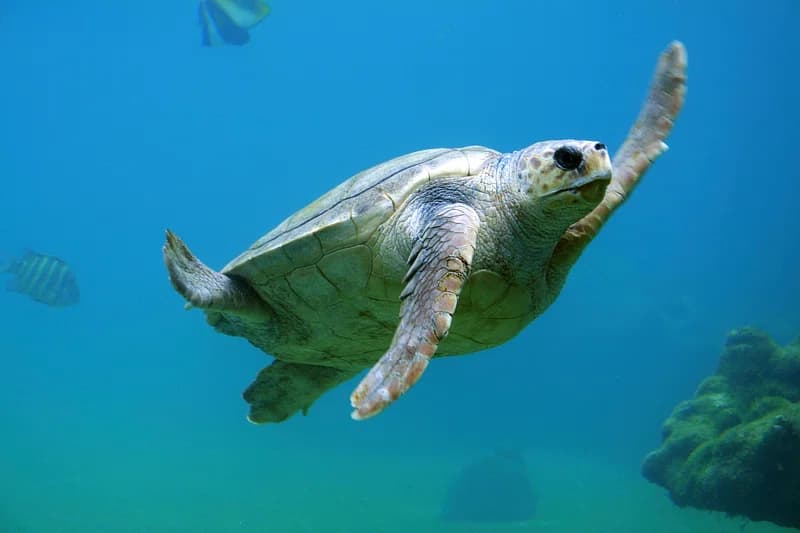I have written about animals for years, and I have no knowledge of the existence of marine turtle species in Cambodia. Land turtles are common but we do not really raise much awareness of these wonderful creatures. The awesome thing is that we have 5 marine turtle species here out of a total of 7. Let’s have a look and see what those are below.
Green Turtle (ល្មិច)
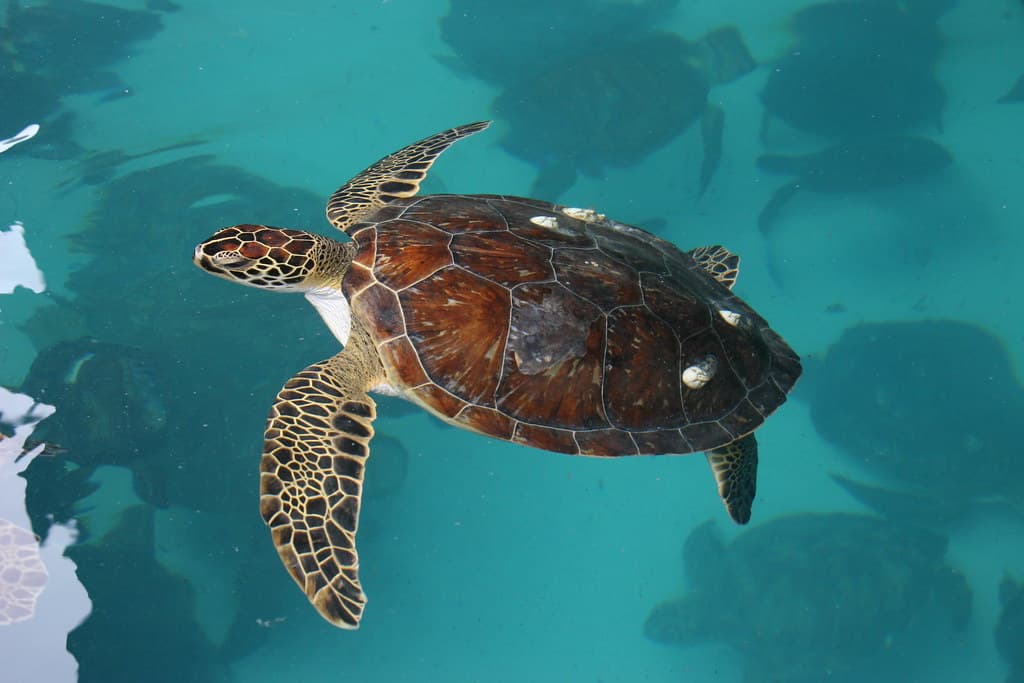
Are they green? Green turtles got their name from the green fat found beneath their carapace. The teardrop-shaped carapace of this turtle is olive to black, and it grows to a length of 72 to 112 centimeters. This large size makes them the largest hard-shelled sea turtles in the world. One of the distinct characteristics of this turtle is the 5 scutes that run down the middle of their shells. There are also 4 scutes on each side of the shell as well. A green turtle has a very short snout and unhooked serrated beak, and it cannot pull its neck into the shell.
The great thing about them is that green turtles have a large range that extends around the world. They live in subtropical and tropical seas, especially in the Atlantic, Indian, and Pacific Oceans. Mature green turtles spend most of their time in shallow coast waters with lush seagrass beds. Adults usually stay in inshore bays, lagoons, and shoals with lush seagrass meadows. As herbivores, they mainly feed on algae and seagrasses as well as discarded fish, invertebrates, and sponges. Not different from other marine turtle species out there, this one also migrate long distance between feeding grounds and hatching beaches.
Being classified as Endangered on the IUCN Red List and CITES, green sea turtles are under protection in many countries. It is illegal to collect, harm, or kill them though these acts are inevitable in some places. Along with that, human activity because there are still people who hunt them and their eggs for food. Other threats like coasting development, fishing net entanglement, habitat loss, poaching, and pollution also play great parts in affecting their population.
Hawksbill Turtle (អណ្តើកក្រាស)
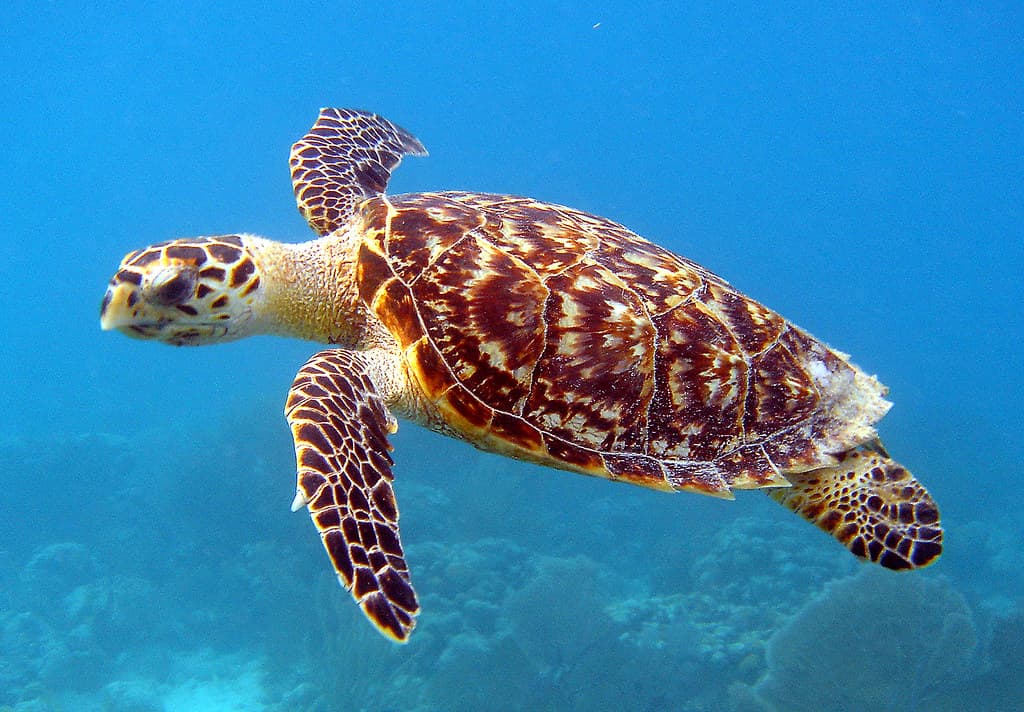
You guessed it, hawksbill turtles got their names from the beak-like mouth that resembles a hawk beak. A hawksbill turtle’s head comes to a tapered point and its lower jaw is V-shaped, giving a hawk-like appearance. One of the most eye-catching things is that their shells have an irregular combination of shades of amber, black, brown, orange, and yellow. The shells have serrated edges with overlapping scutes, and adults can grow up to 1 meter in shell length.
Hawksbill turtles are common in the subtropical and tropical waters of all major oceans across the world. These turtles have different habits during their life cycle but they often inhabit healthy coral reef spots, lagoons, and open oceans. Their sharp beaks allow them to find food in hard-to-reach cracks and crevices. The most interesting thing is that they are the only marine turtle species that can survive on sponges as their main diet. Apart from sea sponges, they also feed on algae, corals, crustaceans, jellyfish, mollusks, sea urchins, small fish, and tunicates.
People hunt these marine turtles for their beautiful shells for craftspeople to create many types of jewelry and trinkets. The history of this hunting for their shell almost drove them to extinction once already. Even making hunting them and trading products made from them illegal still cannot stop the acts completely. Their other threats are bycatch in fishing gear, direct harvest for eggs and meat, habitat loss, pollution, and vessel strikes.
Fun Fact: Their flesh is harmful to humans due to their consumption of toxic and venomous sponges.
Leatherback Turtle (ល្មិចព្រុយបី)
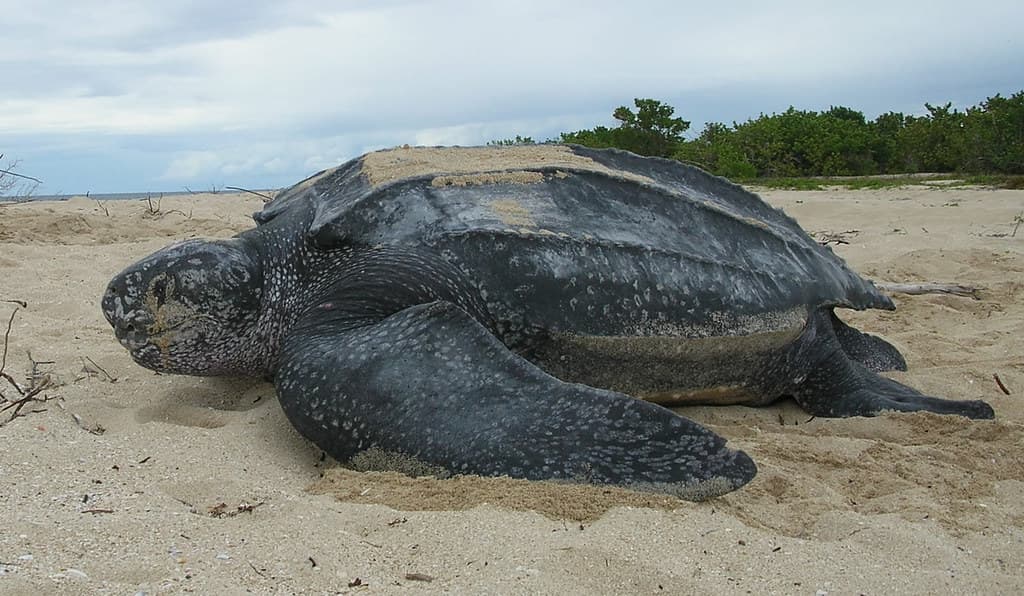
Here we are looking at the largest turtle in the world, and the turtle species with so many distinctive characteristics. As the largest turtles, they can reach lengths of up to 2.7 meters and weigh 500 kilograms. Leatherback is the only turtle species that lacks a hard shell and scale; hence, the name. They got their name from the tough rubbery skin that resembles leather. The shell of a leatherback turtle has 7 ridges along its length and tapers to a blunt point. While many turtles have strong jaws, this one does not. Their delicate jaws would be damaged if they feed on anything other than soft-bodied animals like jellyfish and salps.
The leatherback turtle also has a wide distribution in almost every ocean throughout the globe, except for the Antarctic and Arctic. They have the longest migration between breeding and feeding sites of any sea turtle species out there. If you look closely, you can see that their front flippers are extra long, in fact, longer than other sea turtles. Both the long front flippers and paddle-shaped back flippers are for their long-distance foraging migrations.
This marine turtle species is so delicate, and they are facing threats from every angle. On nesting beaches, people collect their eggs and hunt them for consumption. In their environment, they are facing incidental capture in fishing gear, habitat degradation and loss, pollution, and vessel strikes. These are the reasons why they are listed as Vulnerable on the IUCN Red List.
Loggerhead Turtle (ល្មិចក្បាលធំ)
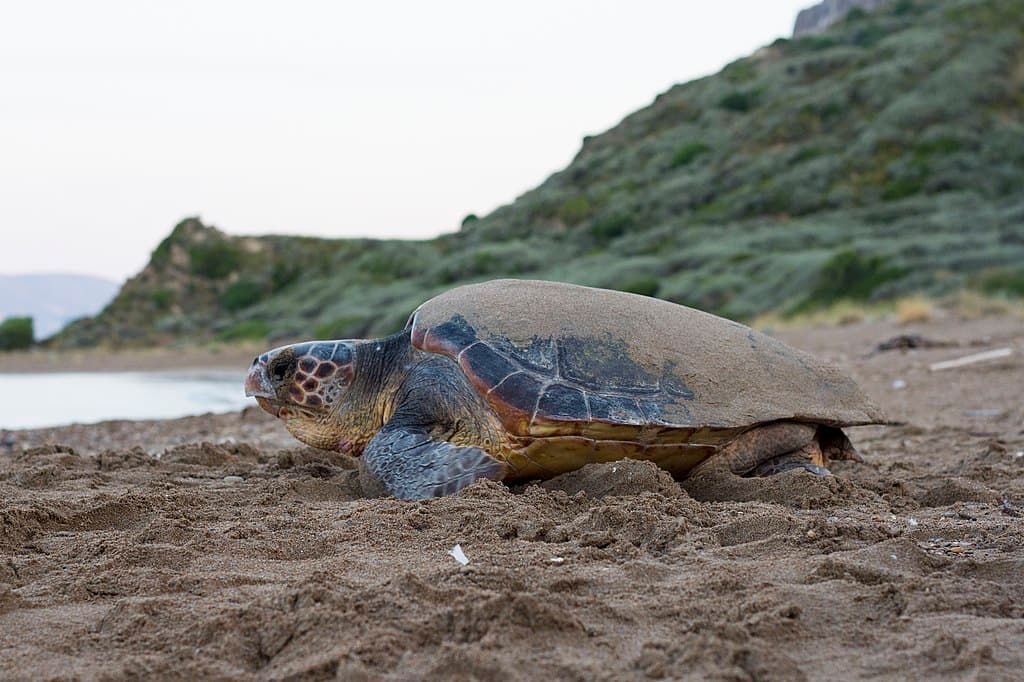
The loggerhead turtle has a large head that supports its powerful jaw muscles when it feeds on hard-shelled prey. Those jaws are strong enough to crush the shells of queen conch, and not every turtle can do that. Its reddish-brown carapace is slightly heart-shaped, growing from 70 to 95 centimeters long. The bony carapace of these turtles does not have ridges but with large non-overlapping rough scutes. Its front flippers are short and thick with 2 claws while the back flippers can have 2 or 3 claws.
Loggerhead turtles are found worldwide in subtropical and temperate waters of the Atlantic, Indian, and Pacific Oceans, and in the Mediterranean Sea. They spend most of their lives in estuaries, open oceans, saltwater habitats, and shallow coastal waters. Across those marine waters, they feed on bottom-dwelling invertebrate and hard-shelled prey including bivalves, decapods, gastropods, and horseshoe crabs. That’s not all, they have the largest menu among their relatives thanks to their powerful jaws. Some other meals are barnacles, cephalopods, corals, flying fish, sea anemones, sea cucumbers, sea pens, sponges, starfish, worms, and more.
When it comes to threats, they are facing just the same as other marine turtle species. The most common threats are bycatch, habitat degradation and loss, harvest of eggs, and pollution. People do not hunt them for meat or shells as much as other turtles, so hunting is not their main threat. However, they are still classified as Vulnerable on the IUCN Red List.
Olive Ridley (ល្មិចប្រផេះ)
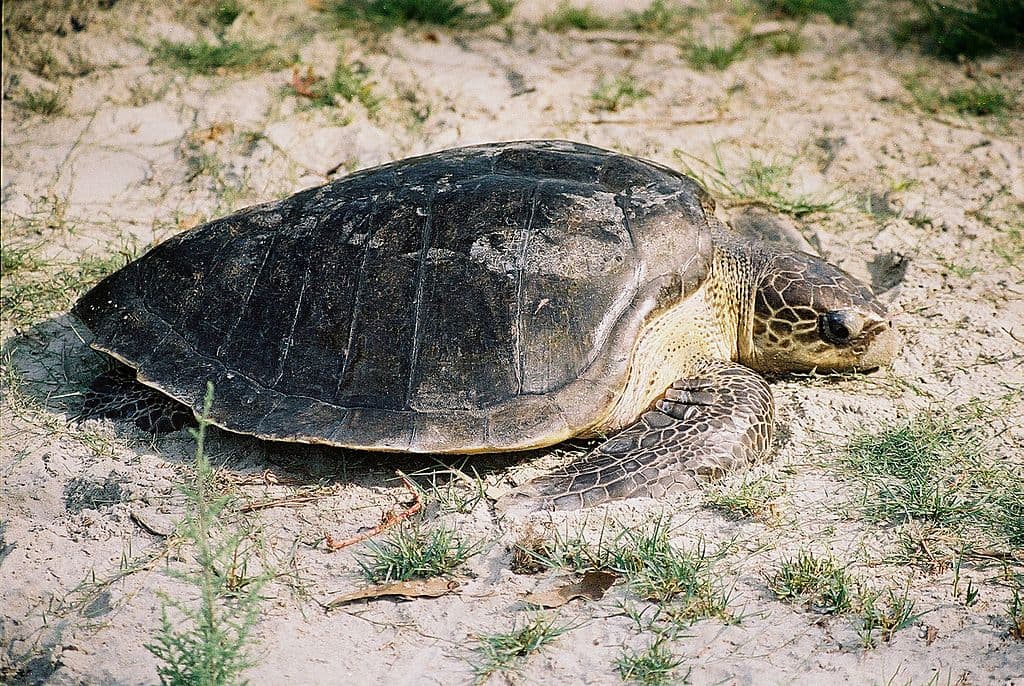
Olive ridley is one of the marine turtle species in Cambodia, and it is the second-smallest sea turtle in the world. Growing to around 61 centimeters in carapace length, this turtle is quite small. Similar to that of the loggerhead’s, its carapace is also heart-shaped but it has unique scutes. There are 4 pairs of pore-bearing inframarginal scutes on the bridge, 2 pairs of prefrontals, and up to 9 later scutes per side. The shell has an olive green hue or grayish-green color; hence the name.
Thanks to its abundance, its distribution is widely spread across the world; especially in the Indian and Pacific Oceans. They prefer estuaries, open waters, and shallow marine waters where they can feed on various carnivorous diets. Their common meals are bivalves, crabs, fish, jellyfish, rock lobsters, sea urchins, shrimps, sipunculid worms, snails, and tunicates. On top of that, they can also dive 150 meters deep to forage on benthic invertebrates.
This marine turtle species is facing threats from every angle at every moment of the day. Despite the global distribution, olive ridley turtles are still considered endangered due to nesting site loss. Along with that, their eggs are raided by various predators while there are more predators waiting to feed on hatchlings. People also collect their eggs, slaughter nesting females on the beach, and harvest adults at sea for commercial sale.
Related Post: Freshwater Turtle Species In Cambodia
